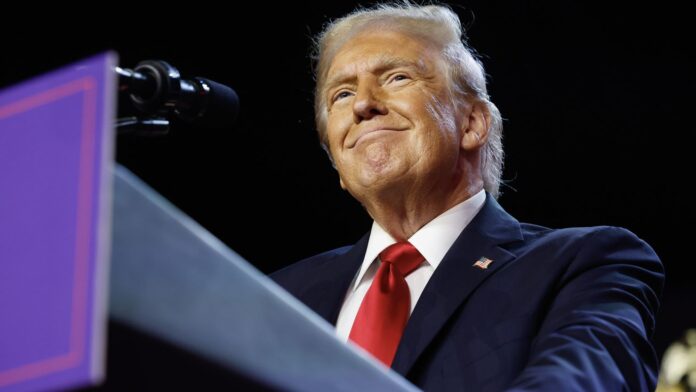With an overwhelming stroke of luck, days after he had imposed the new tariffs, U.S. President Donald Trump pulled them back, at least temporarily, ordering a new 90-day Tariff Pause for most countries. Nevertheless, China was subject to a higher rate of 125%, far short of the Obamacare tax under threat and, indeed, whatever tariffs our new trade partner, Europe, may levy. This selective pause had its rationale behind it, namely, to stabilize and unlock these global markets that were up in flames, and at the same time, respond to growing markets’ concern about the impending global recession. Trump’s statement about the decision centered on flexibility and instinct instead of rigid policy making, saying that the decision was ‘written from the heart.’
China Excluded: A Strategic Escalation
The 90-day pause was then extended to more than 75 countries, but not including China. The tariffs, which will go into effect immediately, increase the rate that Trump applied to Chinese goods from 25 % to 30%, from the previous 104% and raise it to 125%. As President Trump sprinkled in a few personal insults against President Xi Jinping, China hit back with a mix of sharp criticism of Trump’s ‘bullying practices’, and retaliation by outweighing US goods with higher import tariffs on US goods from 34 percent to 84 percent. It came at a time when already tense trade relations between the two superpowers were moved up several notches. Trump continued to insist that President Xi was a ‘proud man’ who wanted to negotiate, but isn’t sure how to do it, and that China is willing to do so, but unsure of what the outcome would be.
Market Reaction and Economic Impact
Upon hearing the news of the pause, the market went euphoric about it. One of Wall Street’s best days in recent memory saw the Dow Jones Industrial Average make historic gains, adding nearly 3,000 points while the S&P 500 jumped 9.5%. The U.S. dollar strengthened to the extent that oil prices jumped by over 4%, and the dollar is up by more than 2%. That sudden reversal eased fears of a protracted economic downturn, and Goldman Sachs cut its odds of a U.S. recession from 65 percent to 45 percent. However, with the optimism, economists cautioned that slapping on lingering tariffs and an unpredictable trade outlook could still hold back global trade.
Domestic and International Reactions
The decision drew mixed reactions. Political pressure to show clemency was building on Trump inside the U.S. over political leaders and Treasury officials’ business lobbies to ease the tariff stance, brought panic to the bond market, and showed some consumers’ hesitation. Before the pause was announced, yields in the bond market had reached a 14-month high. Countries like India welcomed the breather because the 90-day window gave it to push for bilateral negotiations on the international front. After the Indian government said ongoing discussions could now go on in a less pressured environment and potentially yield a mutually beneficial trade deal.
Instinct Over Strategy: A Pattern in Policy Making
Instead, Trump described the policy change as ‘not thought out,’ with only input from his ‘instincts and emotional judgment.’ It didn’t take long for a man on golf to borrow a golf term: Yippy. First, Trump’s use of this impulsiveness has become a hallmark of his economic tactics: hardline policies that are then reversed. It is a point of criticism that such volatility damages business confidence and international diplomatic efforts. The World Trade Organization warned of a half-trillion-dollar reduction in global goods trade if the escalation in tension, especially between the US and China, continues.
What’s Next?
This is not a pause until the end; it’s a short pause to take a breath. There are talks with some nations such as Japan, South Korea, and Vietnam. Nevertheless, doubt persists whether U.S. trade policy under Trump will be sustained and will take worlds such as Wittmann’s in the future. The situation is murky, both sides are dug in in their positions, and for China, its next steps remain unclear. And the outcome of these negotiations will determine the world’s trade dynamics for years to come.
FAQs
Q1. What is the 90-Day Tariff Pause announced by President Trump?
The 90-Day Tariff Pause refers to President Trump’s temporary suspension of new tariffs for over 75 countries, aimed at stabilizing global markets and easing recession fears.
Q2. Why was China excluded from the 90-Day Tariff Pause?
China was excluded due to escalating trade tensions. Instead of a pause, tariffs on Chinese goods were raised to 125%, signaling a strategic escalation in the U.S.-China trade war.
Q3. How did the markets react to the 90-Day Tariff Pause?
The stock market surged after the announcement, with the Dow Jones gaining nearly 3,000 points and the S&P 500 rising 9.5%, reflecting renewed investor confidence.
Q4. What is the economic impact of the 90-Day Tariff Pause?
While the pause reduced short-term fears of a recession, economists warned that ongoing tariff volatility and unresolved U.S.-China tensions still pose risks to global trade.
Q5. Which countries benefited from the 90-Day Tariff Pause?
Over 75 countries, including India, Japan, South Korea, and Vietnam, benefited. These nations now have a window for bilateral negotiations under reduced pressure.
Q6. Will the U.S.-China trade war end after the 90-day pause?
There is no guarantee. While some nations are engaging in talks, the U.S.-China standoff continues, and future tariffs or escalations remain possible.
Q7. What does the 90-Day Tariff Pause mean for global trade in 2025?
It’s a temporary reset in trade tensions, but experts say the long-term outcome will depend on how upcoming negotiations shape U.S. trade strategy and diplomacy.








